Ground source heat pump costs: What can you expect to pay?
We take a look at ground source heat pumps costs to see just what's involved, how much you need to budget and where your money will go
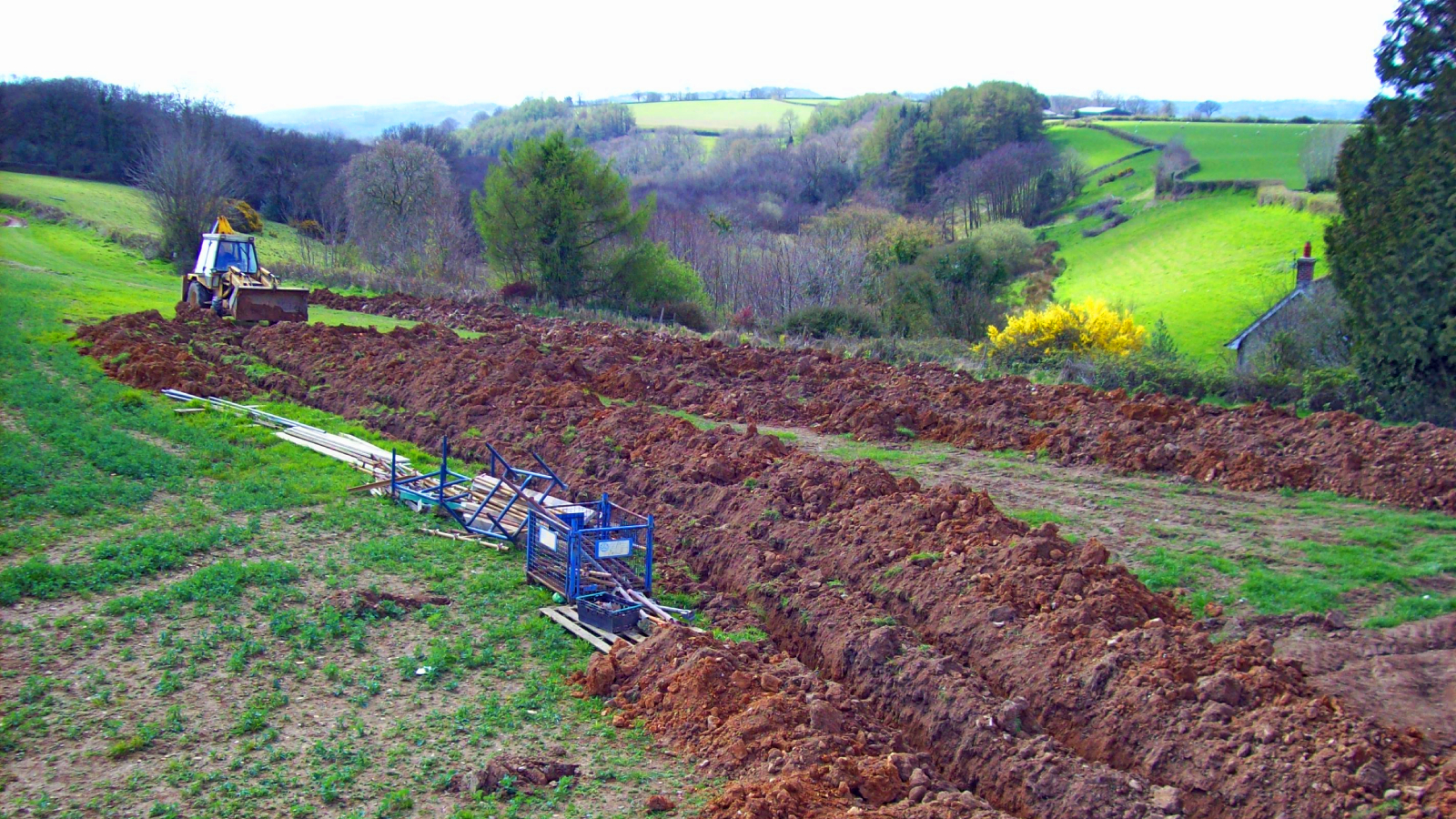
Before calculating ground source heat pump costs, understanding that ground source heat pumps work by drawing on the ground's natural heat is essential, in order to understand the level of groundworks required and how this impacts the final price.
And, while choosing a ground source heat pump for a self build project is a more straightforward sum to estimate, if you're considering one as part of a home renovation scheme, you may also need to factor in the costs of upgrading your existing home heating.
That said, the upside is that with the right investment you will more than likely make savings on your energy bills and improve your home's eco-efficiency.
We've taken expert advice on the different costs involved with choosing a ground source heat pump, to help you budget for one.
Ground source heat pump costs: What am I paying for?
A ground source heat pump will typically cost from £16,000. However, there are many variables which will impact this cost.
Installing a ground source heat pump involves fitting a heat pump unit inside your home and a hefty amount of groundworks outside. It's the latter which primarily makes the final cost rise in comparison to other methods of heating your home.
"A ground source heat pump uses energy stored in the ground, or from a water source, to provide a building with 100% of its heating and hot water needs all year round, without reducing efficiency in the colder months," explains David Billingsley, sales director at Kensa.
There are two different methods of laying the pipes. Your available outdoor space and ground conditions will dictate whether you can install a horizontal ground array or a borehole/vertical system. A vertical system is more costly.
Other factors influencing cost can include the complexity of the installation. The distance from the heat pump unit to the ground loop manifold chamber can impact on cost, as can the fact that bigger properties will need larger heat pumps – even possibly more than one unit – alongside a more complex hydraulic design.
Then, it may be that due to the low temperature nature of ground source heat pumps, you have to undertake work inside your home to make your existing emitters suitable. You'll also need to find space for a plant room, or somewhere to house the heat pump unit.
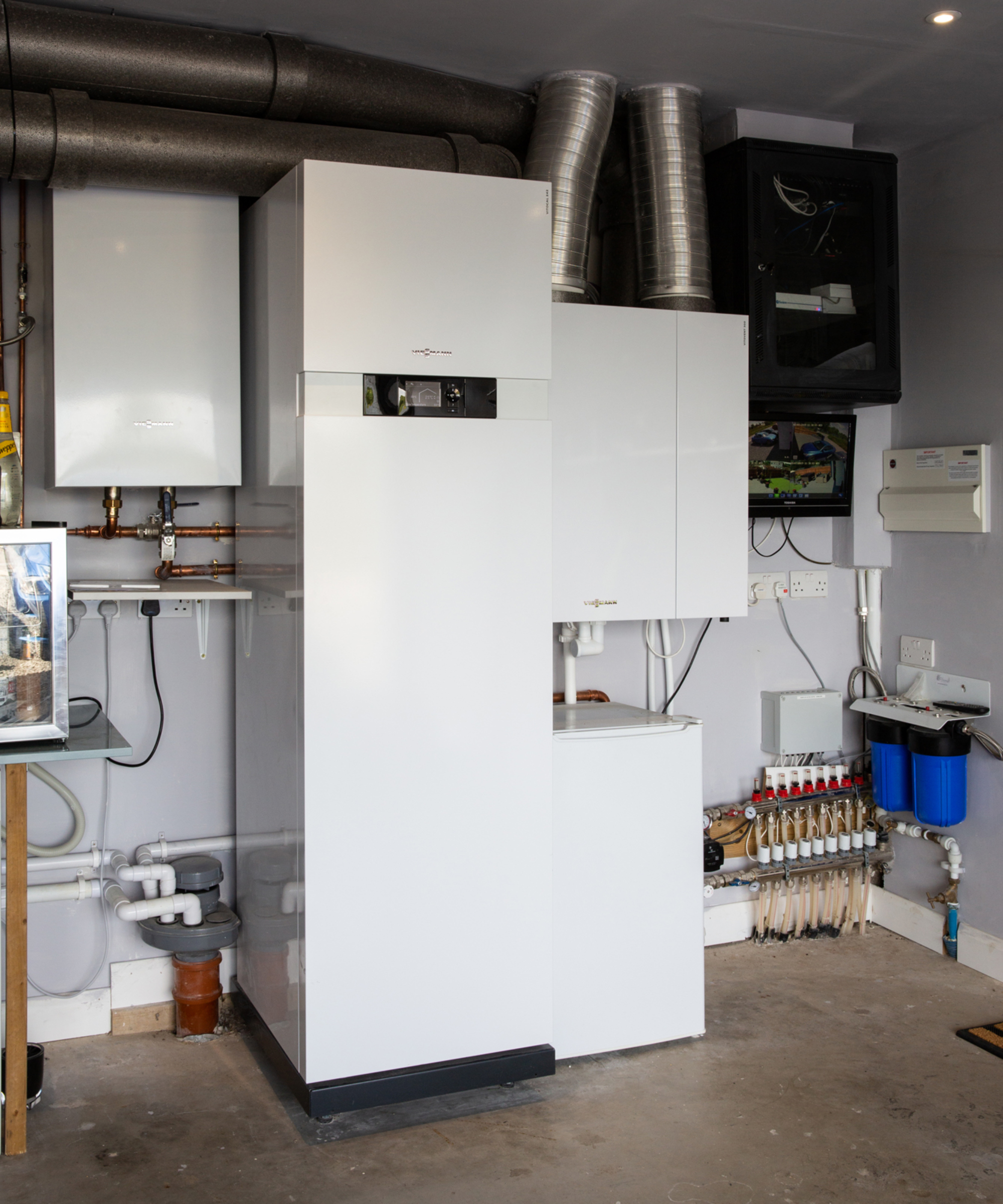

David has been working for Kensa since 2011, bringing with him a wealth of experience having already been involved in the heat pump industry since 2004. David manages the sales team and works within both the domestic and commercial sectors.
Heat pump and installation costs
"Ground source heat pumps themselves can be sited inside your home or an adjoining building," says David Billingsley, "meaning they have little to no impact on a property's external appearance. They can even be small enough to fit inside an airing cupboard — much like traditional combi boilers."
"Like all heating products however, heat pumps can come in various sizes," explains David, "and the type of heat pump installed in a home usually depends on the property and the household's heating and hot water needs."
As an example, Kensa's website states the costs for their smallest heat pump unit, the Kensa Shoebox, which is suitable for flats, apartments and highly insulated new builds, starts at £4,450. The Kensa Evo, which is more suitable for a medium to large house, would set you back around £7,365. But these are prices for the heat pump unit, not a full package cost.
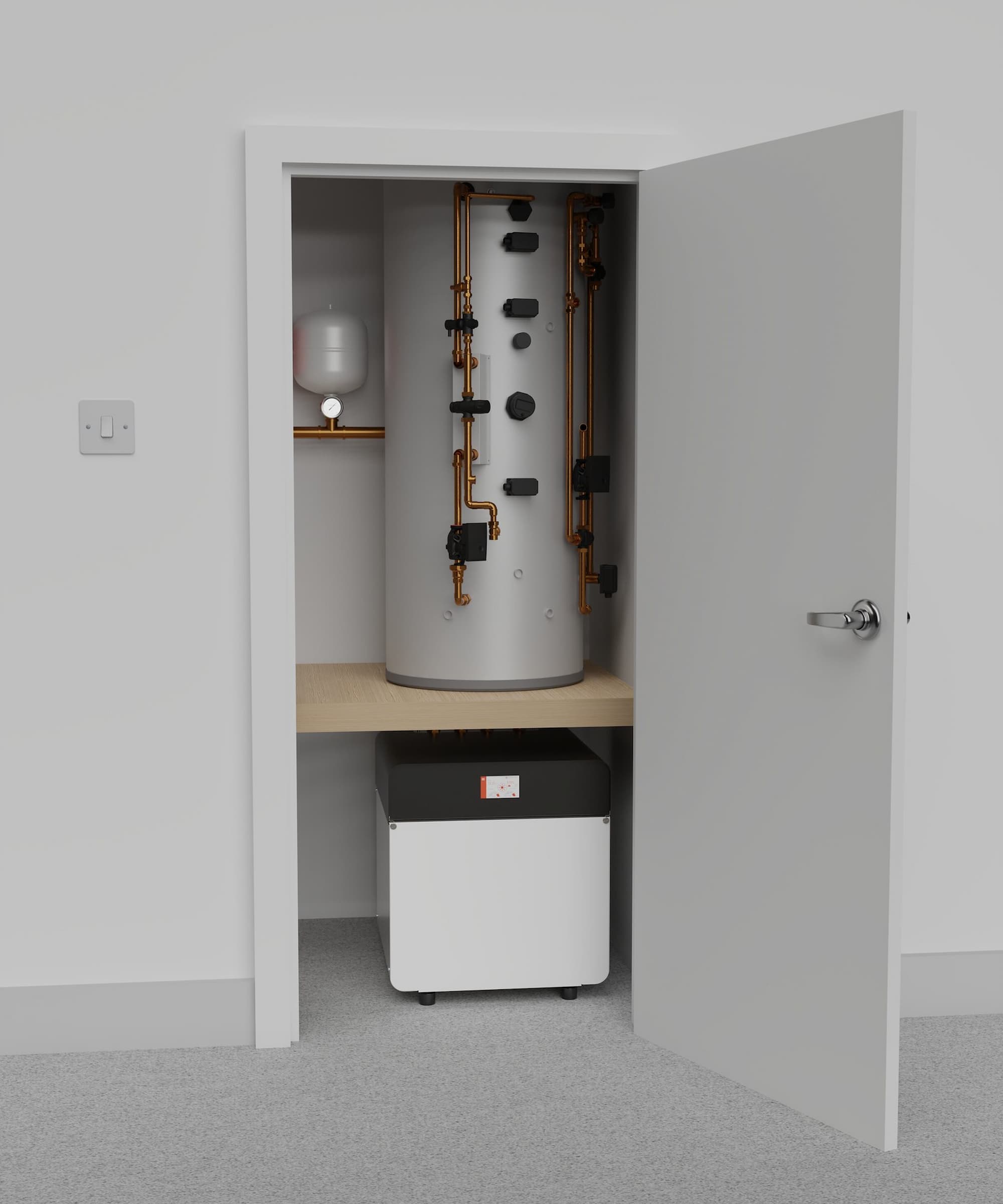
Your heat pump size will impact costs
"For an average 240m² four-bedroom house, you would likely need a heat pump in the range of 10kW to 16kW," says Emma Bohan, managing director at IMS Heat Pumps. "This is a general estimate, as the exact size would depend on factors like your insulation, heat loss, and your specific heating needs.
"This is why it is so important to have an accurate heat loss measurement conducted before any design or quote can be completed," she adds.
As with most items, there are also higher spec models available which can make the price rise, but they aren't without substantial benefits.
"Costs can of course increase with higher-end heat pumps as they offer greater efficiency, durability, advanced controls and longer warranty periods," says Emma. "More expensive models may have features like internet connectivity, advanced monitoring, and more reliable components.
"However, spending more typically means higher seasonal performance factors (SPFs) and better long-term savings," she notes.

Emma brings over two decades of experience to the heat pump industry. She is a passionate advocate for heat pumps' role in the UK's transition to renewable energy and the reduction of fossil fuel dependence. Alongside her work at IMS, she serves as Vice Chair of the Ground Source Heat Pump Association and holds key positions in industry groups, including the MCS Installer Forum, MCS Heat Pump Working Group, and CIBSE Heat Pump Working Group.
Total installation costs will exclude groundworks
"A 12kW horizontal array, which is suitable for larger homes, would cost around £13,000 to £18,000, says Emma Bohan. "Additional costs for groundworks (digging trenches) would also apply."
Vertical arrays on the other hand are more costly. "A vertical system of the same size (12kW) could cost between £20,000 and £30,000, with borehole drilling adding significant cost compared to a horizontal system," she adds.
Groundworks
When it comes to splitting out ground source heat pump costs, there's a fairly even split between the cost of the pump and the groundworks and installation.
"Generally, the heat pump unit accounts for 40% to 60% of the total cost," says Elizabeth Bohan, "with groundworks and installation covering the rest. Vertical systems are more expensive due to the drilling required for boreholes."
Horizontal ground array
If you're hoping to choose a horizontal ground array, you'll first need to check how much space does a ground source heat pump need.
If you have enough space, the costs will depend a lot on the ground conditions. A very wet environment will possibly require pumps to clear the water in a trench while the pipes are laid. The walls of the trench could also be unstable which will require further support, and if there are a lot of rocks in the ground then this will also add cost to the excavation.
Either way, horizontal trench digging can add several thousand pounds to the cost. One way of saving money can be to hire your own groundworkers.
"While IMS Heat Pumps provides estimates," explains Emma, "customers often complete this work themselves or arrange for local contractors to handle this part of the work at a lower cost.
"The cost for digging is included in full-service quotes, but outsourcing is an option that can save you money. Depending on your land, and how you want it reinstated, costs can vary between £25 and £65 per metre."
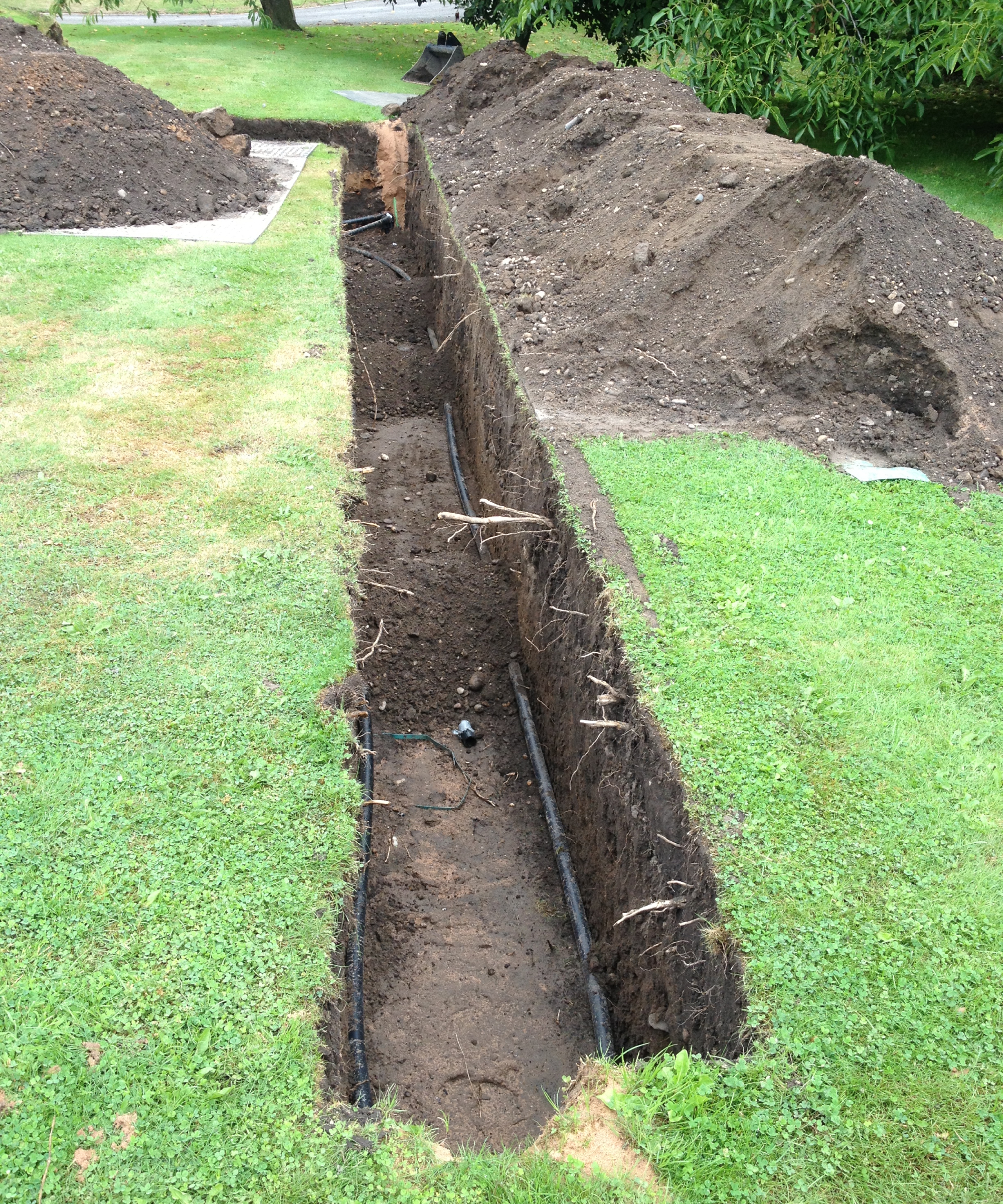
Borehole/vertical ground source heat pump
Borehole collectors are more expensive to dig than horizontal ground loops, and should be done properly, based on a geologist report.
"For a vertical system, as a rule of thumb, you typically need 100 meters of borehole depth per 5kW of heat output," explains Emma Bohan. "A 12kW system would, therefore, require approximately 300 meters of borehole drilling," although this doesn't need to be dug as one continuous borehole.
"Depending on the geology of your specific location," says Emma, "this could be 3 x 100 meters or 1 x 300 meters."
Costs for digging boreholes will vary depending on the geology of your land. Allow for anything upwards of £50 per metre.
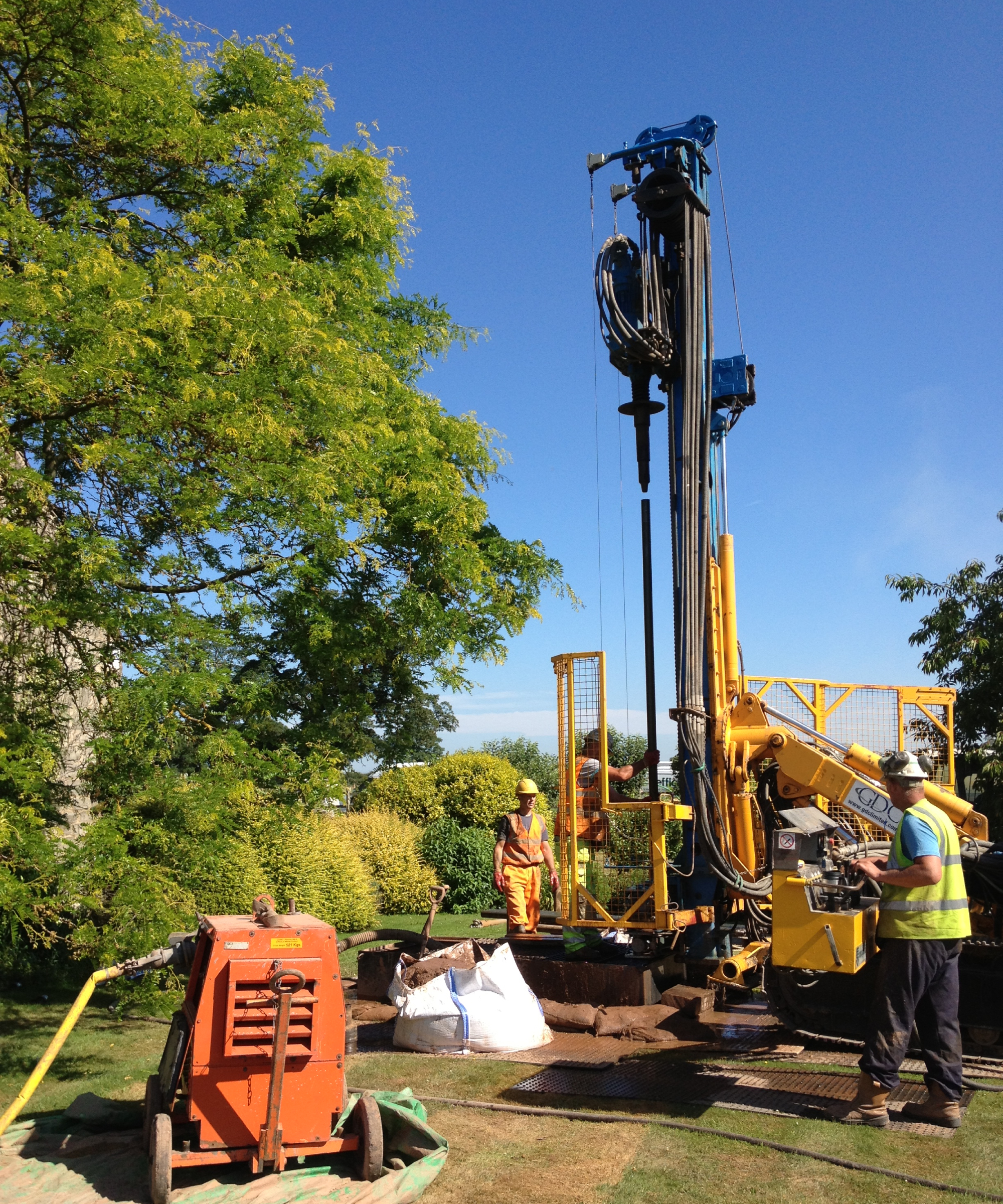
Additional costs to factor in
Much has been written about the temperature output differences in ground source heat pumps vs gas boilers which is one of the main reasons you may also incur additional costs when opting for this more eco-friendly heating option.
Ground source heat pumps operate at lower temperatures than gas or oil boilers which has led to questions around are heat pumps suitable for old homes, and if installing a ground source heat pump means replacing your current type of radiators with underfloor heating.
In general, this will depend on your home's energy needs, but a good company should be able to assist you with assessing what's required.
"IMS Heat Pumps will assess your existing system during the survey," confirms Emma Bohan, "and may suggest upgrades such as insulation, radiators, or pipework modifications to optimise the ground source heat pump's performance.
You may require new pipework to the hot water cylinder and to the central heating distribution is if it's currently located near to the existing boiler rather than the proposed location of the heat pump unit. A new hot water cylinder may be required too, but, this should form part of the total install costs.
"A typical ground source heat pump installation would include internal pipework, the hot water cylinder, and necessary connections to your heating system," says Emma. "These elements are often part of the overall package but don’t include significant upgrades to the existing radiator systems."
Remember there may also be a cost in removing the existing boiler, and if replacing oil or LPG heating fuels, you will need to budget for removing fuel storage tanks, the concrete base and fuel pipework. In all instances, getting a variety of quotes from a number of suppliers will be necessary as every installation on a renovation project will be different.
Radiators and underfloor heating
Ground source heat pumps and underfloor heating are known to work well together, but radiators can also be suitable if they have enough surface area to compensate for a lower temperature input. There are also radiators available designed purely for use with heat pumps which could be a sensible option if your current ones are tired and dated. Costs will again vary depending on the style, design and output.
If you already have a wet radiator system, your ground source heat pump provider will make a full assessment of your property to advise if you need to consider replacing them. Underfloor heating costs can start from around £120 per m2 for a new build or from £135 per m2 upwards if you retrofitting it within a house renovation.
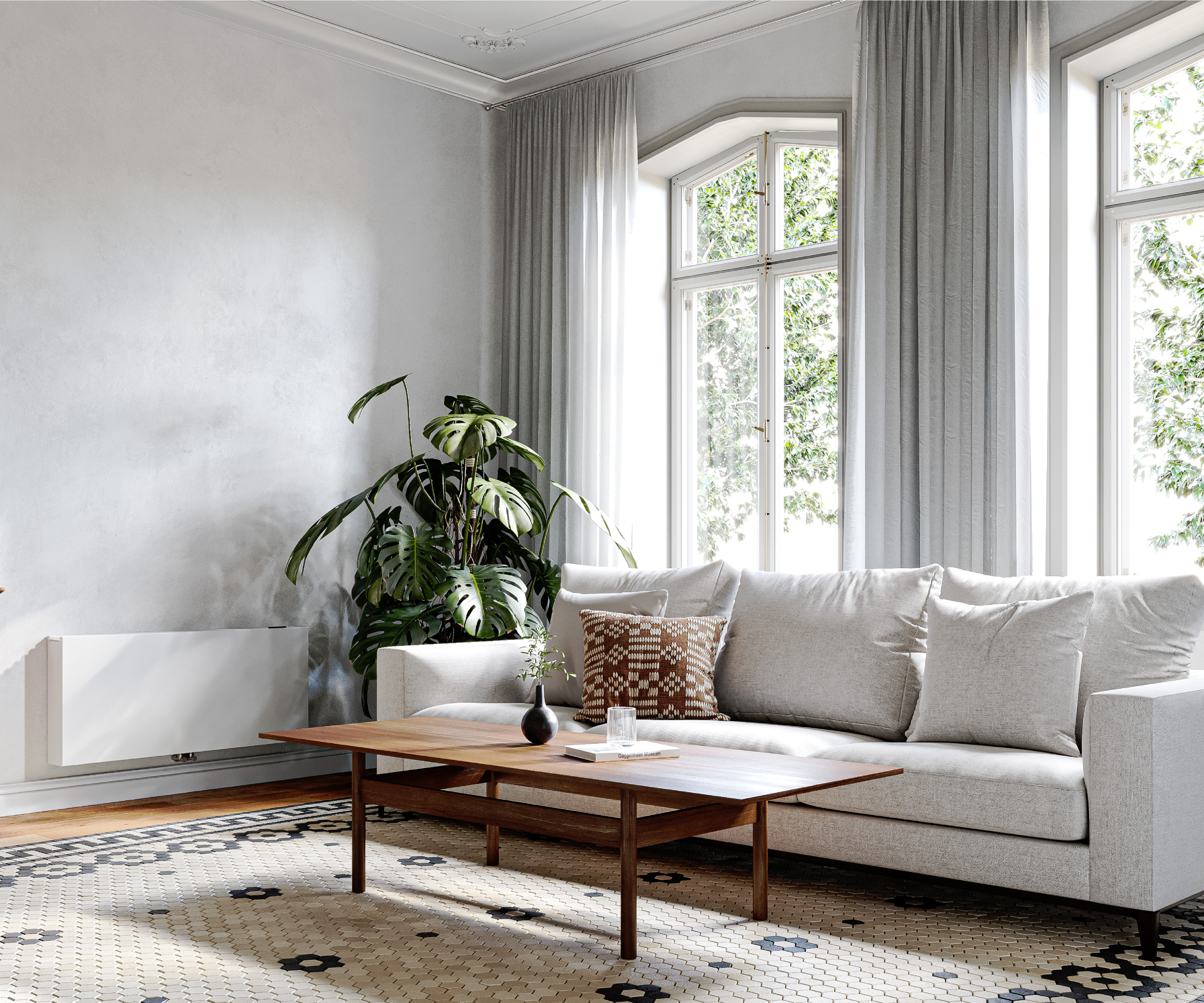
Insulation improvements
As many older properties are not airtight and have suboptimal levels of insulation, resulting in lower efficiency and resultant higher running costs, upgrading your home insulation and the airtightness of a property before installation of a ground source heat pump can be considered as a good way of improving the savings and efficiency.
A heat pump works best in a well-insulated home. While one will work in a house with a high heat demand, you would need a larger heat pump which costs more.
"Heat pump costs increase with output capacity," confirms Emma Bohan. "For example, a 10kW heat pump will cost considerably less than a 20kW unit, both in terms of the heat pump and the associated installation work, especially for vertical systems where more drilling is required.
"This is why we talk about reducing your heat loss by insulating your home," she explains, "as this will reduce the output capacity of the heat pump you need, and therefore the capital cost of the heat pump itself — less heat loss, smaller unit, lower cost to install, lower cost to run."
Running costs
"Ground temperatures remain fairly steady throughout the year, usually between 8-12°C, no matter the air temperature," says David Billingsley. "This means their running costs are less than air source heat pumps, as the heat pump doesn't have to work as hard to produce heating and hot water for the home."
In a property with an annual heat load of 15,000kWh, you would expect the electric use from your ground source heat pump to be somewhere between 3,600kWh and 4,700kWh.
Based on the cost of a unit of electricity at around 24.5p per kWh and the average efficiency of a ground source heat pump at 320% to 420%, this represents an annual running cost of between £882 and £1,152.
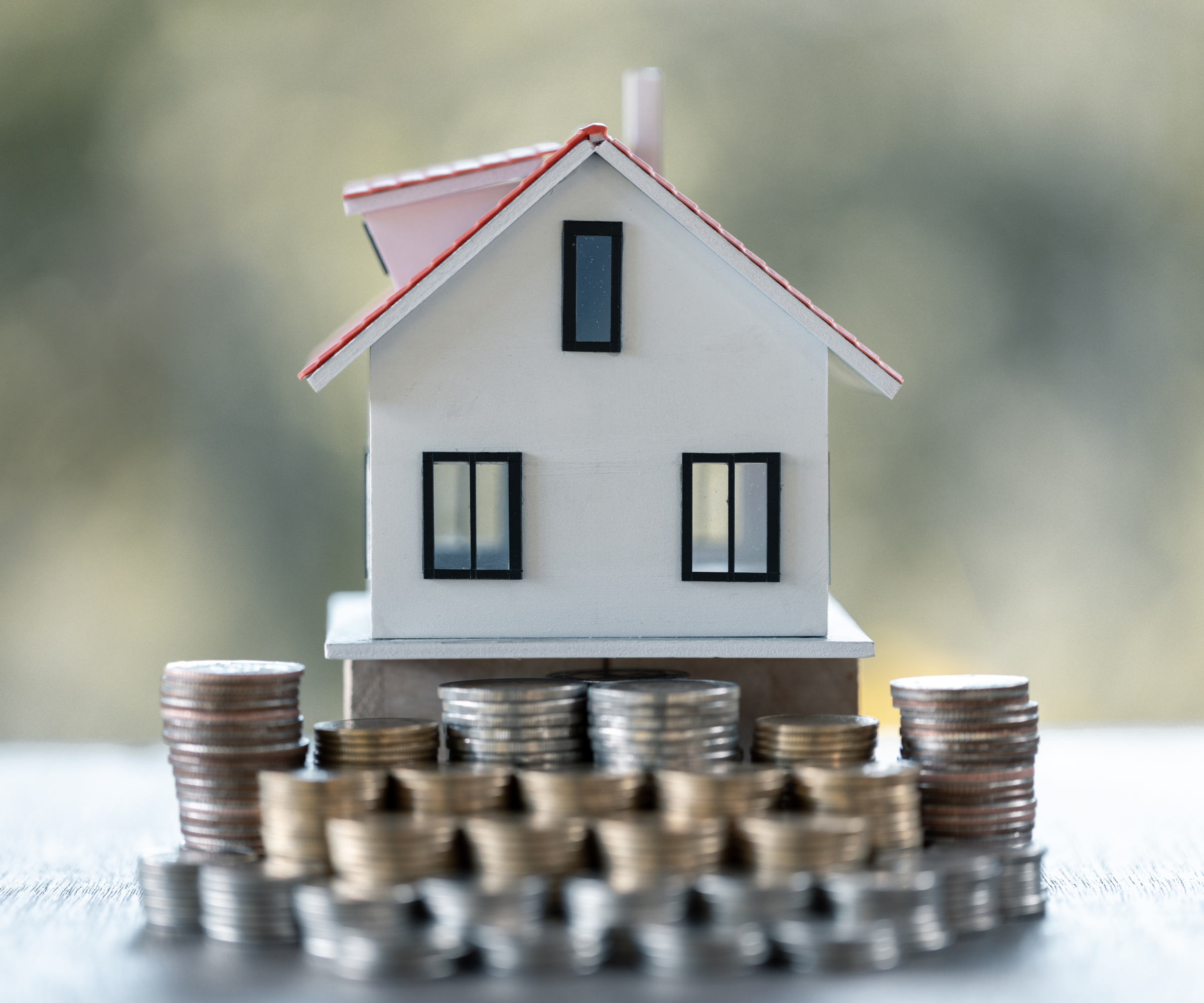
Grants
There are ground source heat pump grants available to assist with costs, with the Boiler Upgrade Scheme the main one available. Offering a fixed upfront payment, homeowners can claim up to £7,500 towards installation. This will be issued in a voucher system, similar to how the Green Homes Grant once operated.
There are several other heat pump grants around the UK which can be used to recoup the cost of installation of a ground source heat pump. However, these are typically open to households on lower incomes.
FAQ
Can load-shifting help save on running costs?
Load-shifting is a strategy for managing energy use by shifting from peak hours to off-peak hours where the energy source costs less. Ground source heat pumps are a prime candidate for applying load-shifting strategies, as they can run at off-peak times with ease, lowering the cost of the electricity it requires to run.
This is because they're quiet, meaning they're unlikely to cause disturbance if active during the night, and ground temperatures stay pretty consistent throughout the day.
Ground source heat pumps with smart controls are able to create a heating schedule based on predicted electricity tariffs, meaning taking advantage of the lowest cost, lowest carbon electricity doesn't require manual operation of the heat pump unit.
Advances in technology, which include heat storage batteries, also mean that you can save any heat generated during these off-peak times for use during peak hours of the day.
Does a ground source heat pump require a lot of maintenance?
While the work involved to install may be more, when it comes to how to maintain a heat pump, ground source heat pumps become one of the lowest maintenance systems. While an annual service is recommended, there is little else for a homeowner to do.
Like the idea of ground source but live near a large expanse of water? You could also consider a water source heat pump instead of a ground source heat pump. Using the natural heat from the water, they offer similar energy savings and can cause less disruption to install.
Get the Homebuilding & Renovating Newsletter
Bring your dream home to life with expert advice, how to guides and design inspiration. Sign up for our newsletter and get two free tickets to a Homebuilding & Renovating Show near you.

Sarah is Homebuilding & Renovating’s Assistant Editor and joined the team in 2024. An established homes and interiors writer, Sarah has renovated and extended a number of properties, including a listing building and renovation project that featured on Grand Designs. Although she said she would never buy a listed property again, she has recently purchased a Grade II listed apartment. As it had already been professionally renovated, she has instead set her sights on tackling some changes to improve the building’s energy efficiency, as well as adding some personal touches to the interior.
